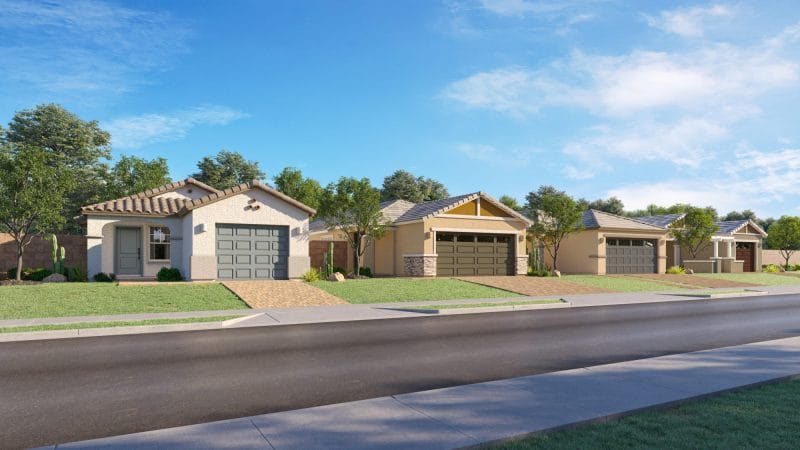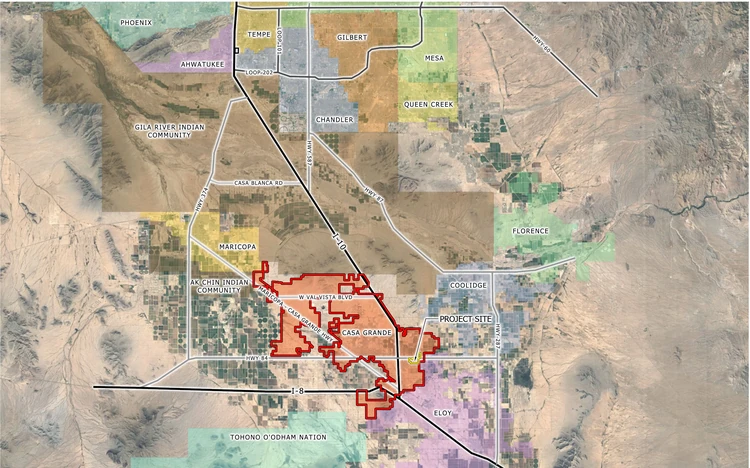
It’s all about height and airplanes
By Phil Riske | Senior Reporter/Writer
The NFL Raiders, who are moving to Las Vegas, want to start construction by Nov. 1 on a new stadium that would be 225 feet tall. The 65,000-seat venue, estimated to cost $1.9 billion, would be completed by June 30, 2020, the Raiders said in its request for a height requirement review of the project.
Federal Aviation Administration [FAA] will now examine whether the domed stadium might hinder operations at nearby McCarran International Airport. Additional factors might also be considered, including stadium lighting and post-game fireworks that could affect jetliners passing through the nation’s eighth-busiest airport, reports the Las Vegas Review-Journal.
The FAA reviews any structure 150 feet or taller, regardless of location, as part of its obstruction evaluation and airport airspace analysis.
The situation rings a bell for those who remember when the Arizona Cardinals proposed to build its stadium in Tempe directly east of Sky Harbor International Airport.
The Tempe story
In 2001, I took a helicopter ride with a pilot for ABC 15 over the Washington St.-Priest Dr. area in Tempe, at the time the proposed site for the new Arizona Cardinals football stadium.
The proposed stadium site was, to say the least, a political and government fireball regarding aircraft noise levels and safety, which I reported on as editor of Sky Harbor Airport News, and independent weekly newspaper.
There were concerns about commercial airliners flying too close to the planned stadium, which was near the end of Runway 26, which lands airplanes from east to west. Stadium proponents claimed the stadium would be to the side of the landing approach, but my helicopter ride showed the site directly in line with 26, which we documented with photos.
Regardless, Tempe’s lobbyist said nothing would stop the $334 million project,
“In the big picture of this construction starting and the stadium going up as planned and on time, it’s totally a done deal,” former Attorney General Grant Woods told us at an airport news conference.
At the time, the FAA had issued a preliminary opinion the stadium site would be a “hazard to air navigation” as planned.
Also at the time, Hugh Hallman, who was a a harsh critic of the noise Sky Harbor’s jets generate over some of Tempe’s oldest neighborhoods that straddle the Salt River, was a candidate for mayor.
Tempe’s legal action forced jets to make tricky and risky, maneuvers during final approaches until the FAA abandoned the “sidestep” procedure in 2002 after two planes came dangerously close on final approach.
At the same time Hallman was attacking Sky Harbor, he went along with the Cardinals stadium proposal by Tempe that would have placed the facility directly under the final approach to 26.
In the end, Glendale landed what is now the Cardinals Stadium, which looking for new naming rights
Back to Vegas
The FAA does not have authority over local building decisions. However, a Clark County, Nev. ordinance states the project cannot be approved if the FAA finds any structure — including a stadium — to be an airspace hazard, county officials have said.
The Clark County Department of Aviation is not a party to the FAA study and the department’s director, Rosemary Vassiliadis, has said in the past that the Russell site would not present the airport with concerns, though she said ultimately she’d await the FAA’s findings, reports Las Vegas Review-Journal.
It’s unknown how long the FAA study will take to complete. In comparison, it took more than a year to resolve radar interference issues at Los Angeles International Airport that were caused by the height of the Rams’ new stadium in Inglewood. In that case, the Rams agreed to install a secondary aircraft tracking system on the stadium.







